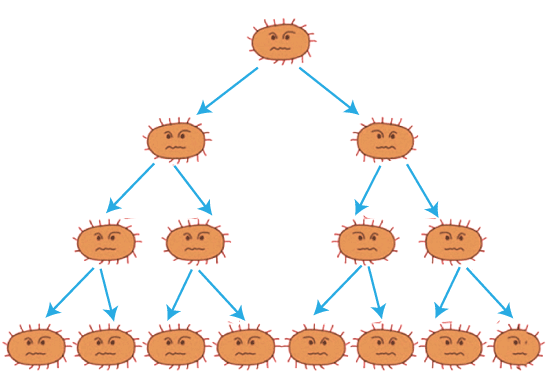Asexual ReproductionAsexual reproduction is the process of reproducing without the use of sex cells or gametes. Asexual reproduction does not require any male and female gametes for reproduction, as required in sexual reproduction. In asexual reproduction, an individual can reproduce its offspring without the involvement of any mate. The offspring that is produced is usually a clone of its parent. Both multicellular and unicellular species can have asexual reproduction. In this process, there is no contribution of gamete fusion and multiplication of the number of chromosomes. It will inherit the same genes as the parent has, except if the rare mutation occurs due to change in a few circumstances. 
Asexual Reproduction CharacteristicsThe following are the critical characteristics of asexual reproduction:
Types of Asexual ReproductionThere are different types of asexual reproduction: Fragmentation: In this type of asexual production, the body is frequently divided into two or more parts by process, known as fragmentation: for example, planaria, spirogyra. Fragmentation occurs in some asteroids when two arms groups pull in different directions, ripping the animal into two parts. Regeneration: The process in which missing or damaged body parts replaces or restore. Crayfish, many reptiles, and amphibians are some animals in which regeneration occurs. A torn bodily wall and the ability to seal wounds are required for successful regeneration. In this process, the specialized cells of the organism can differentiate and grow into a new individual. Binary Fission: The word "fission" means "division." The parent cell splits into two cells during binary fission. Different type of organism exhibits different type of cell division patterns. Like some are directional, and others are non-directional. An example of binary fission is seen in amoeba and euglena. It is one of the easiest and straightforward techniques of reproduction. In this process, the parent cell breaks into two daughter cells; each split cell has its own nucleus that is genetically identical to the parent nucleus. The cytoplasm also splits, resulting in two daughter cells of equal size. The process is repeated, and the offspring cells continue to develop and divide. Budding: Budding is the process in which a new organism develops from the buds that grow on the parent body. The bud later develops into a duplicate parent organism. Hydra is an organism that reproduces from itself. The parent organism is a mode to offer nutrients and protection to the bud. And once it fully develops into a new individual, the bud detaches itself and starts the next cycle. Vegetative reproduction: It is also known as vegetative propagation, vegetative multiplication, or cloning. The new plants reproduce asexually using their vegetative propagules, such as leaves tubers, roots, stems, and buds. This process of vegetative propagation occurs without any involvement of gamete or fertilization of male and female gametes. Potato tubers, runners, onion bulbs, and other vegetative propagated plants are examples. Spore Formation: Another method of asexual reproduction is spore generation. In unfavourable circumstances, the organism generates sporangium. It is a sac-like structure that carries spores. When the circumstances are right, the sporangium bursts open, releasing minute single-celled spores that germinate and develop into a new Plant. Chlamydomonas, an alga, and Albergo fungus are some examples of spore formation. ConclusionThe asexual process is a unique process to produce offspring. In this process single cell is split and creates two identical cells. In this process, the reproduction of offspring occurs without the exchange of genetic information with another partner. In multicellular organisms, the fundamental cell-by-cell division is not conceivable. They are organized at a higher level, such as tissues, organs, and organ systems. Asexual reproduction has the disadvantage of not having wide diversity. Yet, they can multiply quicker than sexually reproducing species and increase their number in less time.
Next TopicExamples of Asexual Reproduction
|
 For Videos Join Our Youtube Channel: Join Now
For Videos Join Our Youtube Channel: Join Now
Feedback
- Send your Feedback to [email protected]
Help Others, Please Share










